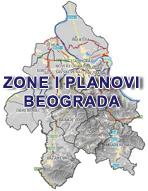STUDENT PROJECT | Natural Water as Cultural Water | Zhicheng Xu

Time, space and culture have tremendous impacts on landscape. The power of them is so impressive that people would be amazed by things they can do to nature. In the meantime, it raises the question, in the field of contemporary landscape architecture, what is the balancing point between culture and nature? What gives a place its identity? How can we provide programs that fulfil pubic desires with minimum disturbance to existing natural system?

Even further, I wonder if it is possible to use public infrastructure as an opportunity to solve these questions and restore the original ecological integrity. The project seeks to find the balancing point between culture and nature along the Wabash River in Lafayette, Indiana, which is currently underappreciated because of
1. Flooding
2. Vacancy
3. Isolation
4. Limited Programs
5. Lack of Understanding (Resident don’t know the cultural background of the river)
6. Disturbed Ecology
1. Flooding
2. Vacancy
3. Isolation
4. Limited Programs
5. Lack of Understanding (Resident don’t know the cultural background of the river)
6. Disturbed Ecology

The History
The natural and cultural developing timeline of Lafayette can be condensed into four words: Wetland, Indian, Industrial, and Agricultural. In 1700’s, this region was inhabited by native people and was mostly wetland. In 1811, the Battle of Tippecanoe took place. In 1825, City of Lafayette was founded by William Digby as an important station for water transportation. After that, the city embraced industrial development and constructed the Wabash and Erie Canal in the 1840’s. Today, Lafayette, a city built on river, has developed as a diversified community, with manufacturing, merchandising, education and agricultural production all contributing their share.
The natural and cultural developing timeline of Lafayette can be condensed into four words: Wetland, Indian, Industrial, and Agricultural. In 1700’s, this region was inhabited by native people and was mostly wetland. In 1811, the Battle of Tippecanoe took place. In 1825, City of Lafayette was founded by William Digby as an important station for water transportation. After that, the city embraced industrial development and constructed the Wabash and Erie Canal in the 1840’s. Today, Lafayette, a city built on river, has developed as a diversified community, with manufacturing, merchandising, education and agricultural production all contributing their share.
The Design
The general design of this project focused on the relationship between culture and nature. By studying reports about people’s view of the river, local geographic and demographic information, the concept of “cultural landscape serves as sustainable storm water management infrastructure” was formed. The inspiration of the design comes from the city’s history – the transportation tool Native Americans originally used on the river, and the main agricultural product of the city: corn. The morphological structure of the canoe and the matrix of the corn seed was taken, hybridized and re-conceptualized into revelatory shapes to create positive and negative landforms. It reroutes and collects water and serves as a buffer between the river and the city during flooding seasons. The plan provides a refuge for wetland plant and animal species. It also creates a platform for water related recreational actives. In this way, people have the opportunity to change their perspective about the river. The city of Lafayette will have its new cultural identity.
The general design of this project focused on the relationship between culture and nature. By studying reports about people’s view of the river, local geographic and demographic information, the concept of “cultural landscape serves as sustainable storm water management infrastructure” was formed. The inspiration of the design comes from the city’s history – the transportation tool Native Americans originally used on the river, and the main agricultural product of the city: corn. The morphological structure of the canoe and the matrix of the corn seed was taken, hybridized and re-conceptualized into revelatory shapes to create positive and negative landforms. It reroutes and collects water and serves as a buffer between the river and the city during flooding seasons. The plan provides a refuge for wetland plant and animal species. It also creates a platform for water related recreational actives. In this way, people have the opportunity to change their perspective about the river. The city of Lafayette will have its new cultural identity.



The project seeks to find the balancing point between culture and nature along the Wabash River in Lafayette, Indiana, which is currently under appreciated because of flooding, vacancy and disconnection. The design solution is an embodiment of cultural representation and technology of stormwater management in order to achieve ecological and social resilience. With potential for spontaneous use and dynamic programming, the site can transform into a sustainable infrastructure with a cultural identity that provides active waterfront experience.

STUDENT PROJECT | Natural Water as Cultural Water | Zhicheng Xu
Designer: Zhicheng Xu
School: Purdue University
Project Title: Natural Water as Cultural Water / A 30 Year Plan for Wabash River Corridor in Lafayette Project Location (City & State): Lafayette & West Lafayette, IN
Additional Project Credits: David Barbarash, Robert Sovinski, Drew Stangel, Taro Cai, Tippecanoe County Gis, United States Census Bureau, Stats Indiana, Wabash River Enhancement Corporation
Designer: Zhicheng Xu
School: Purdue University
Project Title: Natural Water as Cultural Water / A 30 Year Plan for Wabash River Corridor in Lafayette Project Location (City & State): Lafayette & West Lafayette, IN
Additional Project Credits: David Barbarash, Robert Sovinski, Drew Stangel, Taro Cai, Tippecanoe County Gis, United States Census Bureau, Stats Indiana, Wabash River Enhancement Corporation
2013 ASLA Student Awards
Award of Excellence
Analysis and Planning Category
Award of Excellence
Analysis and Planning Category



Коментари
Постави коментар
Ovde možete ostaviti vaš komentar i sugestije